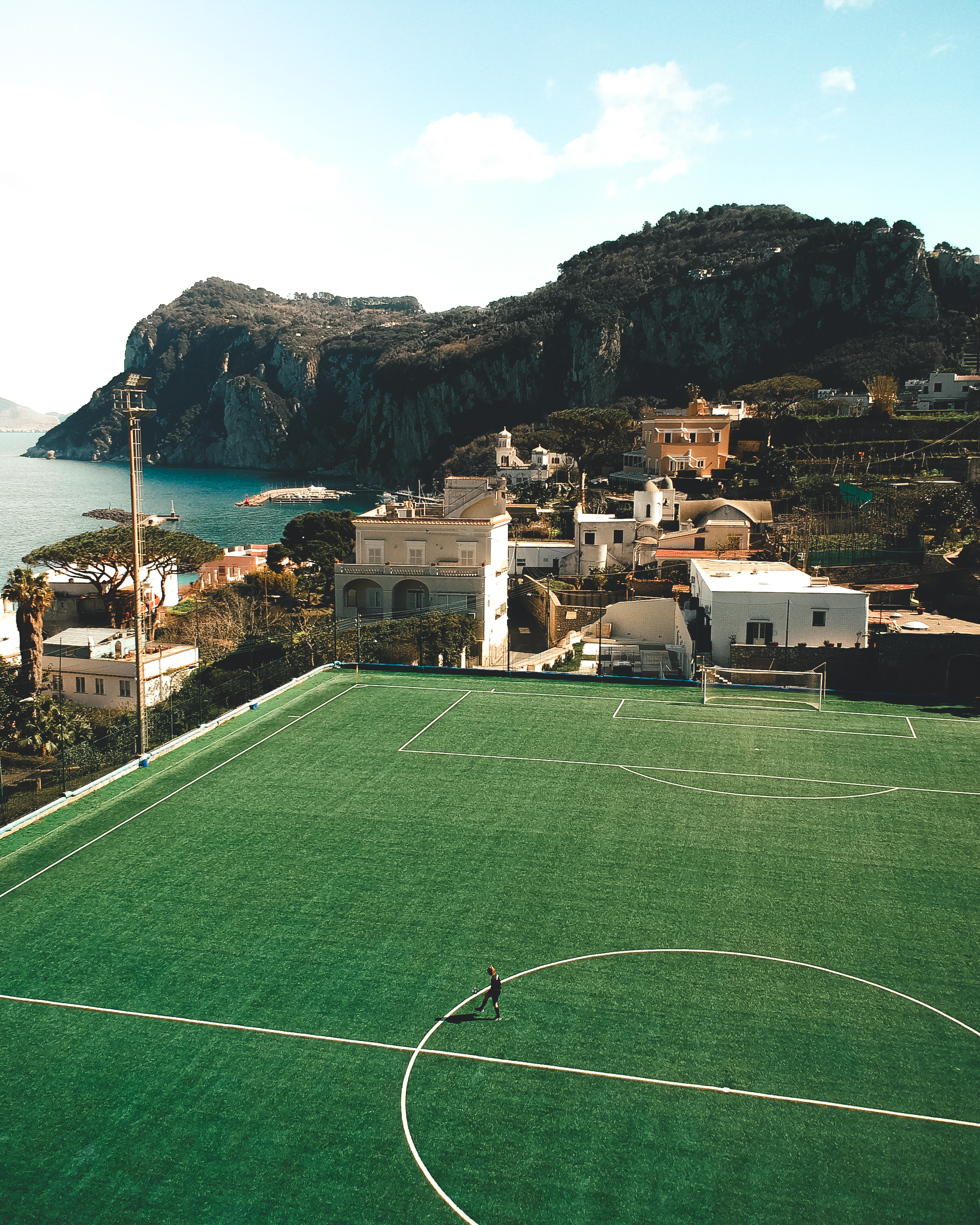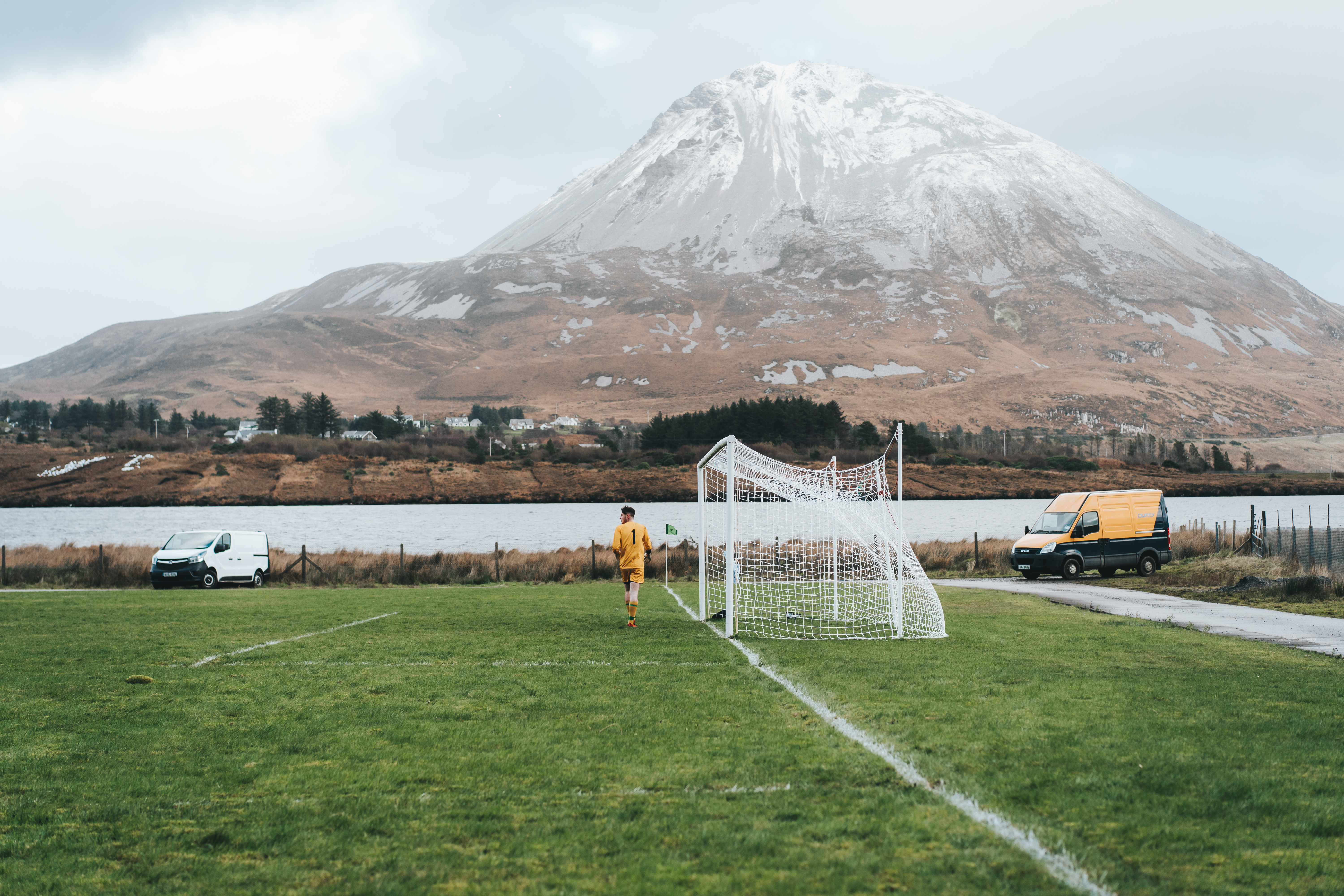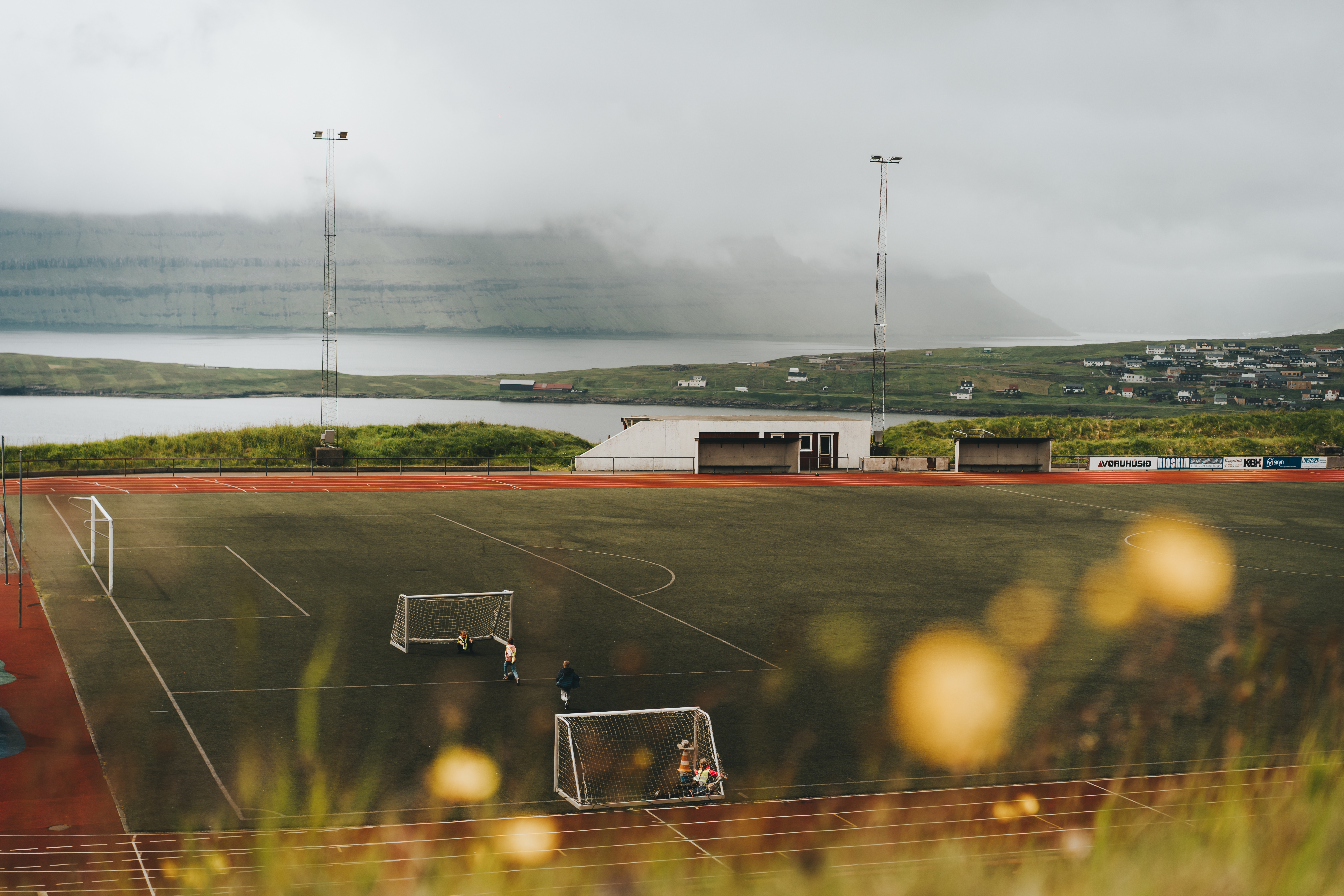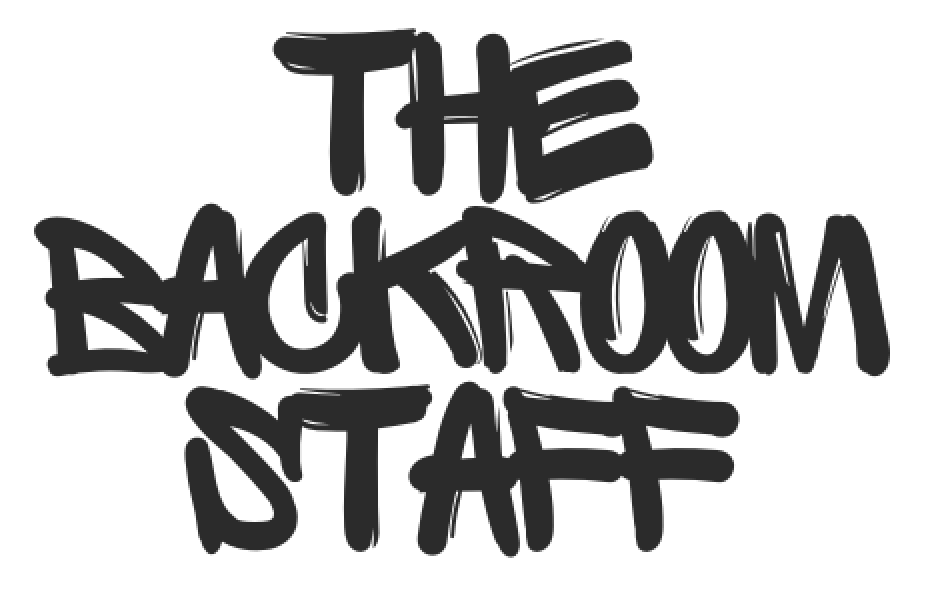Careers in football, like those in the ‘real world,’ are rarely linear. People can - and often do - wear many hats at once. Pato Jerzak is no exception. Professional footballer, photographer, magazine editor and founder - she’s all of these and more.
Her playing career has seen her play at the very highest levels of women’s football - from the Polish youth national teams to Napoli and the Swedish top flight. A few years ago, she started the football magazine Football is Everywhere where she showcases the impact of football around the world - with a special focus on grassroots football, women’s football and the fans and volunteers that make the game possible.
In this interview, Pato shares her motivations for starting the magazine, what it’s like to run an independent media company and how commercialization is changing football.
p.s. the next edition of Football is Everywhere is out soon - sign up on the website to be notified so you don’t miss it!
The interview has been condensed and lightly edited for grammar and clarity.
[ Why did you start Football is Everywhere? ]
I’ve played football pretty much my whole life and have been playing professionally since I was 17. As a player, I’d always been lucky to be in good environments with really nice people and really good clubs that felt familiar and comfortable. And I think there was a point where I reached a team where I didn’t feel that anymore. People always say, ‘oh, you need to be tough’ but I’d also started working in football in other ways and more and more felt like I, as a player, was being treated like an object.
I started feeling more and more of a disconnect between the football I knew as a child and the huge increase in commercialization that’s everywhere in football now. We felt like it’s getting more and more commercialized and the values between the fans and the sources of the money are getting further apart.
I started meeting a lot of people feeling the same way and we started to question, ‘is it really supposed to be like this?’
We started to go around and interview people that we felt were interesting. We began as a magazine and have also moved into content production and making videos and documentaries.
In a way, we’re trying to help football come back a little bit to a place where fans are members of the clubs and not just consumers, for example. There are clubs doing good things - like fan-owned Bohemians or St. Pauli that are still playing at a high level while treating people well and not taking money from weird places. I think there are a lot of problems in football today and I would hate it if the women’s side would go down the same direction.
"I started feeling more and more of a disconnect between the football I knew as a child and the huge increase in commercialization that’s everywhere in football now"
[ How did you get interested in this side of football and creating content like this? ]
It definitely started when I bought a camera. I always liked Instagram and connecting with people but after I bought a camera, I started to get really interested in photography and got more creative with it - and then I started to take photos of football pitches. People seemed to like those!
I was taking pictures of old pitches and pitches in unique places. I was in Italy at the time and went to Capri, the island near Naples. There was a pitch there surrounded by the sea and cliffs. We took a drone photo of me playing football alone on the pitch. This was right before the pandemic and this photo went viral.
That’s also where we got the idea for the first magazine - I learned about a team way in the north of Sweden where there’s snow pretty much all the time. It’s crazy that people are playing football there! They became one of the topics of the first edition.

[ How did you meet your co-founder? ]
I think Michael and I met in 2017. He was building his career in a maybe not so usual way. Instead of going to college, he started working right away from high school and was also doing photography and things on YouTube. He was, of course, also into football. And we’re both born in Poland but grew up in different countries and that gave us a little extra connection.
[ How has your vision for Football is Everywhere changed since you started? ]
We’re definitely focused on fans, grassroots football and women’s football. These are the key things we want to focus on. As I mentioned, we’re doing more than just the magazine now too. We’re making a documentary right now that is focused on a fan group because we feel it’s so crazy that fans don’t get so much attention because without them, most clubs wouldn’t have any revenue! These are the stories we want to bring forward more.
[ One of the big themes in Football is Everywhere is commercialization in football and its effect on the fans. Is this a football wide problem or just in the top leagues? ]
I think in Sweden we still have a pretty good connection because we have the 51/49 rule like in Germany. In a way, I think sports are becoming more like the world in general, people just consume things and it’s becoming a more transactional society with everything.
As I said, I don’t know how it’s going in every country but there are some clubs that have managed to keep this connection. I think the problem is, I would be fine with clubs making a normal amount of money from decent sources but others want to compete with other countries where there’s even more money. Then it becomes a problem. We have these big clubs and everyone sees them making so much money and winning everything, people think that’s the solution.
Now football is at a stage where there’s so much money and you can’t just take all the money away or all these rules and laws seem not to apply to some clubs.
"In a way, I think sports are becoming more like the world in general, people just consume things and it’s becoming a more transactional society"
[ What do you think about the connection between men’s and women’s football - particularly the development of more and more ‘men’s’ clubs establishing a women’s side (vs independent women’s clubs)? ]
I don't really like this push that men’s and women’s clubs together is the only way forward. I hate when people say that. I think women’s and men’s football are different - and there’s also a completely different type of demographic that watches.
I think forcing them together is leading to not great situations. In Sweden right now, there are some clubs that have both men’s and women’s teams and they’re really strong brands but the (men’s) fans don’t come and support the women’s team. Hammarby is one of the clubs that’s doing well on the ‘mixed’ side - they have a lot of fans at the women’s and men’s games but that’s very unique and doesn’t work everywhere. I think honestly, many of the clubs don’t really care. This doesn’t just apply to clubs in Sweden, all around Europe you can see similar problems.
Still, it’s obviously more of a struggle for a team that is part of a women’s club. The brand is probably not as strong, they haven’t been around for so long, there’s a lack of history. In general, women’s football lacks the same history of course. But that’s something that you can work on!
I think the whole idea of forcing the two together and comparing everything can be frustrating. There are a lot of opinions coming from people that have no idea - I’ve played around Sweden and Europe and it sometimes feels like people are saying all these equality things but they don’t actually know what they’re talking about at all.
[ The next edition is Poland - what goes into choosing a topic/location? ]
With the first magazine, we chose Sweden because I lived in the north of Sweden at the time - and am from Sweden - so it just made sense. When we did the next one in the Faroe Islands, I was playing professionally and didn’t have much time off. Luckily the Faroe Islands are so small and you can get around so easily, we were able to film all the content and do all the interviews in two weeks. And Ireland is of course because Michael is from Ireland!
So each of our locations has had some kind of connection to us - and Poland of course, we have a lot of connections there, especially from when I played in the youth national team. Besides our connections, we try to find people who are doing something interesting in football.
We get a lot of suggestions and talk to people who already follow us. A lot of people have been super nice and are excited to be interviewed, so that has been really nice.
Right now we're finishing our Poland magazine - so we’re focused on things like contacting printers, setting up everything for fulfillment and planning the launch - and making sure there are no spelling mistakes!


[ Do you have a place in mind for the next edition (after Poland)? ]
We’re actually already making it! I can’t share it yet but… it’s an island as well.
We have another one or two in mind as well but we still need to decide. For example, for one, we might need to get a bit of funding. So far, we’ve mostly been in the north, so we want to see if we can go a bit further south too.
[ How long does it take to create an edition of the magazine? ]
In the beginning we did 3 magazines in about a year and a half. Now, we haven’t published a magazine in a while - Poland will be the first one in a year and a half. We’ve been busy with a lot of client work and it was hard for me to travel.
One of our goals is to become a more consistent magazine doing maybe 2 full magazines per year and also put up some documentaries and other video content and build up a subscriber base.
[ How is the magazine funded? ]
In the beginning everything was funded by us. We basically said, ‘we’re going to do this’ and put everything together ourselves. The main expenses are the printing and a designer but everything else we just did ourselves! To publish the first magazine, we also did a Kickstarter that went really well. It was really nice to see how many people supported it and that helped a lot. More recently, we have some clients we help with creative work and that’s been more or less funding the magazine.
[ What are some of the main challenges in publishing an independent magazine? ]
I think the biggest challenge we have is shipping costs. If you’re not shipping a certain amount of things every month, it’s hard to get a good deal. This makes things harder because it’s quite expensive to ship, especially outside of your country or outside Europe. Shipping becomes more expensive than the actual product, which is obviously a problem! So we’re always looking at new ways to make it cheaper without getting rid of the personal aspect of packaging things yourself. It’s a balance.
Also regarding funding more broadly, we want to work with companies that match our values. It would probably be much easier to get money from, say, betting companies but we’re not going to do that.
Because I’ve been really busy playing football since the start of the magazine, we’ve been trying not to rush things and just grow organically. We don’t want to rush to get funding from places we don’t agree with just to go faster because that would kind of ruin the whole idea of the magazine in the first place.
"we want to work with companies that match our values"
[ What do your teammates think about the magazine/your work? ]
Oh, everyone loves it!
At most clubs I’ve played at, especially the last one, I’ve been helping out on the marketing side as well. So people are always happy that there’s good stuff happening on the socials.
[ What is something you wish more football fans knew - or thought about more? ]
That they can have quite a lot of power together! And I think that they should voice their opinions more.
For example, a couple of years ago when the Super League thing happened - the fans shut it down. These kinds of things should happen because there are so many people in power who have been in power for so many years and we don’t really know why anymore. I think things should change at the top - and fans can play a big role.
